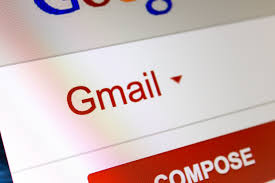
Table of Contents
Check Spam and Trash Folders
If you've noticed that you're not receiving new emails on your Android phone, one of the first things you can do is to check your spam and trash folders. In certain cases, Gmail's algorithms could mistake important emails as spam and send them directly to your spam folder. Therefore, it's essential to regularly check this folder and move any necessary emails back to your primary inbox.
Review Spam Folder
To access the spam folder, open your Gmail application and select the main menu, usually represented by three lines in the top left corner. Scroll down and select the 'Spam' option. If you find any emails that shouldn't be in this folder, open them and select the 'Report Not Spam' option. This action will move the email to your main inbox and also notify Gmail's algorithms not to mark similar emails as spam in the future.
Inspect Trash Folder
Another place where your emails may be ending up is in your trash folder. To check your trash folder, return to the main Gmail menu and scroll down until you see the 'Trash' link. Click on it to access any emails that you may have accidentally deleted or that may have been automatically sent there. If you find an email you need, you can restore it to your inbox by opening it and selecting 'Move to Inbox.'
Verify Your Email Filters and Blocked Addresses
Additionally, your Gmail settings may also be responsible for misplaced emails. Under 'Filters and Blocked Addresses,' you can check if any email addresses have been blocked or if any specific message filtration rules have been set up. These rules could inadvertently cause incoming emails to be redirected to the wrong folder. To check your filters and blocked addresses, open the Gmail settings by clicking on the gear icon in the upper right corner, select the 'Filters and Blocked Addresses' tab, and adjust as needed.
Check All Mail Including Archived Mails
Sometimes, unintentional archiving may be the reason you're not seeing new emails. When you archive an email, it's moved out of your inbox and into 'All Mail.' To check your archived emails, open your Gmail app, select the main menu, and scroll until you find the 'All Mail' label. Any email you've ever received or sent, except for emails in Spam and Trash, will be found here.
If you find an email that has been archived and you'd like it back in your inbox, simply open the email and select the 'Move to Inbox' option.
Also, remember that you can use the search bar at the top of your Gmail account to search for specific emails by keyword, sender, or subject. This feature can help you locate missing emails across all folders and labels in your account.
Verify Sync Settings
Synchronization issues could be another reason why new emails aren't appearing in your Gmail app. Gmail has a 'Sync Gmail' option that, when enabled, ensures that your emails automatically update regardless of the device you’re using. However, if this feature is disabled, your emails will not update unless you manually refresh your Gmail app. Therefore, checking and adjusting your Gmail app's synchronization settings can help solve any email receiving problems.
Launch the Gmail app
Begin by opening your Gmail app on your Android device. Make sure that you're logged in to the account where you're experiencing issues with receiving mail.
Open the Settings Menu
Once you're inside the app, tap on the Menu icon, generally represented by three horizontal lines located in the upper left corner of the screen. This action will open a drop-down list of various options. Scroll down this list and select the 'Settings' option.
Select the Relevant Gmail ID
After opening the settings, you'll see a list of all the Gmail accounts that are currently logged in on your device. Tap on the account that isn't receiving emails to access its specific settings.
Check the “Sync Gmail” Option
Inside your account settings, look for an option that says 'Sync Gmail.' If this box isn't checked, it means that your account isn't set to automatically sync new emails. Tap on this option to enable it and ensure that your account is synced across all your devices.
Enable the “Dynamic Email” Option
Another option to consider is 'Dynamic Email.' This feature allows your emails to be more interactive and can also affect your ability to receive new emails. Ensure that it's enabled for the best email experience.
Check your Device’s Account Sync Settings
In addition to checking your Gmail app's sync settings, make sure your device's general account sync settings are enabled. Start by opening the 'Settings' app on your device, scroll down and select 'Accounts,' and make sure “Auto-sync personal data” is turned on. Then, select your Gmail account from the list, tap 'Account sync,' and make sure you enable Gmail. You can also tap the 3-dot button at the upper right corner and select 'Sync now' to force your account to synchronize.
Clear Gmail Cache
Sometimes, the accumulation of cached data can cause issues with the functionality of apps, including Gmail. The Gmail app, like other apps on your device, saves data and caches files on your phone. Although these files usually don't cause any problem, clearing them might help resolve the issue of not receiving new emails on your Gmail app. Here's how you can clear the Gmail app cache:
Access the Gmail Information Page
Start by opening the 'Settings' app on your Android device. From there, navigate to the 'Apps & Notifications' section and tap on 'App Info.' In the list of applications that appears, find and tap on the Gmail app. This action will open the Gmail Information page.
Open the “Storage” Settings
On the Gmail information page, you will find an option labeled 'Storage.' Tap on it to access the storage settings for your Gmail app.
Clear the Gmail App Cache
In the storage settings, you'll find the 'Clear Cache' and 'Clear Data' options. Tapping 'Clear Cache' will remove all the temporary files the app has stored on your device. Please note, clearing cache will not delete your emails or any essential data; your emails are safely stored on the Gmail server.
If you select 'Clear Data,' be aware that this will remove all the app's data from your phone. This action is akin to reinstalling the app. As such, you'll need to sign in to your Gmail account again and perform an initial sync of your messages.
Once the cache has been cleared, restart your device, open your Gmail app, and check if the issue has been resolved. Clearing the cache can be a powerful solution to many app functionality issues.
Adjust Battery Permissions
Many Android devices come with battery-saving utilities that can limit background data usage and prevent apps, like Gmail, from properly functioning. If Gmail's battery usage is restricted, it might not fetch new emails or display notifications when your phone is not in use. If you’re not getting email notifications or new emails, you may need to check and adjust your battery usage permissions.
Open Gmail App Information
You can access Gmail’s app information by long-pressing on the Gmail app icon on your device. In the context menu that appears, tap on the 'App Info' or 'i' button to open the app information page. This section contains all the settings relevant to the Gmail app.
Access “Battery” Permissions in Settings
Within the app information page, scroll down until you find the 'Battery' section and tap on it to access the battery usage and permissions for the Gmail app. Information on battery usage, as well as various settings related to battery optimization, can be found here.
Set Permission to “Unrestricted”
In the 'Battery' setting, you will find an option labeled 'Battery Optimization.' Tap on this option to view or change the app's battery optimization settings. To ensure that Gmail functions optimally, even when your device is in power-saving mode, select the 'Don't Optimize' option. This exemption allows Gmail to use your device's system resources freely, thereby ensuring timely email notifications and updates.
Please take note that these steps can vary slightly depending on your device manufacturer and the Android version your device is running. As such, if you can't find the options as described above, try to look for similar settings that regulate battery usage for specific apps.




